Matador Network's Blog, page 759
October 26, 2020
Best hikes in New Mexico in winter
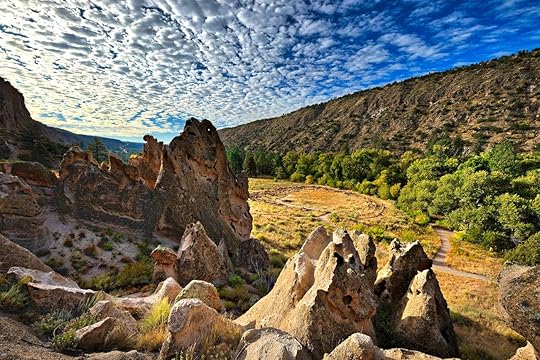
When the weather is cold but you still want to get outdoors, one of the best places to do that is New Mexico. The state, already ideal for a winter road trip, is a place where you can ski one day and hike the next. More notably, New Mexico’s landscapes combine stunning natural beauty, including the country’s newest national park, and rich, historical Indigenous treasures. Just know that this land remains sacred to many Native peoples, so treat it with respect.
But do visit, since your showing up lets decision-makers know that this land should be protected. In fall and winter, here are our favorite places to hike in New Mexico. Just note that New Mexico is arid and its high elevations make the air dryer still. Always carry plenty of water, even when the temperatures feel comfortably cool.
1. Organ Mountains
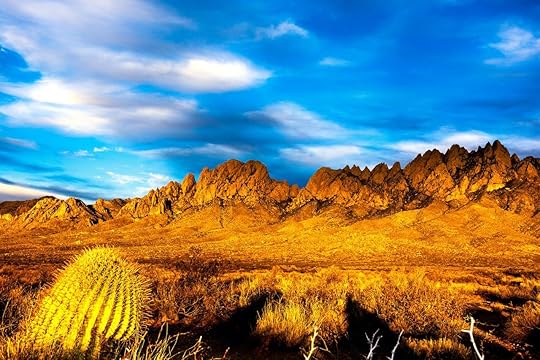
Photo: JB Manning/Shutterstock
The Organ Mountains are a stunning range of rust-tinted peaks in a region of the state that is almost too hot to visit in the summer. The nearby city of Las Cruces, where you can base yourself, is a fantastic place for a weekend visit, with a friendly vibe, local art, and zesty New Mexican cuisine flavored with the area’s inimitable green chilis.
But with average high temperatures from May to September in the high 80s to high 90s, fall and winter are the ideal seasons to explore the area. Just 25 minutes from Las Cruces is the Dripping Springs Natural Area in the Organ foothills. The area’s namesake trail is an easy three-mile hike through desert brush. You may spot desert mule deer, coyotes, and rock squirrels on the ground, while overhead, red-tailed hawks are some of the many species acclimated to the high-altitude desert. Alternatively, on the northern side of the Organ range, 35 minutes from Las Cruces, the Pine Tree Trail is a four-mile loop that takes you up 1,000 feet and offers stunning vistas. In fall, you’ll see the changing leaves of the mesquite trees.
2. White Sands National Park

Photo: sunsinger/Shutterstock
Also close to Las Cruces is White Sands, which became a national park at the end of last year. Even with its new national park status, it’s still a wonderful place to enjoy with your dog — as long as you keep your animal companion on a leash. One of the most popular trails here is the Alkali Flat Trail, which crosses through the incredible dunes made of gypsum, a soft mineral the color of chalk. Although the hike is only five miles roundtrip, it is not actually flat, and walking on the dunes is a taxing exercise.
In fact, the exertion of walking on dunes, the absence of shade, and the incredibly dry air make hiking in hot weather a high-risk endeavor. And from late spring to September, average highs here range from the upper 80s to upper 90s — which means that late fall through early spring is the ideal time to visit. Even in winter, the dunes gleam white in the sunshine. And don’t worry about the overnight freezing temperatures as the dry air makes for big temperature changes, and you’ll find fall and winter days highs reach comfortably into the upper 50s and 60s.
3. Bandelier National Monument

Photo: Traveller70/Shutterstock
The Bandelier National Monument is best known for its ancestral Pueblo ruins, which date back nearly a millennium — with ladders that take you into kiva caves and petroglyphs showing everything from animals and bolts of lightning to more mysterious artistic symbols. Take in these ancient relics on the one-and-a-half-mile Tsankawi Trail. Beyond the fascinating ruins you will find here, the 30,000-acre Bandelier area has over 70 miles of trails, many of which are accessible in the colder months. However, the Cerro Grande trail, a four-and-a-half-mile loop that takes you 1,200 feet up through conifers to the highest point in the park at over 10,000 feet, is probably best attempted before the snow falls — unless you have appropriate snow-ready hiking gear and poles.
4. Chaco Culture National Historical Park

Photo: Jeffrey M. Frank/Shutterstock
Another place to take in New Mexico’s centuries-old cultural wealth is in the Chaco Culture National Historical Park, a UNESCO World Heritage site that is home to Chacoan Great Houses that date back 900 years. The most popular hike in the area is the Pueblo Alto hike, which takes you from Kin Klesto, one of the best-preserved Great Houses, up three miles and 345 feet to the Pueblo Alto ruins on the north side of Chaco Canyon. The views from there, at nearly 6,500 feet, to the canyon’s southern wall and its western expanse are as impressive as the ruins themselves, which as of yet have not been completely excavated. For a longer hike try the Penasco Blanco Ruins Trail, a seven-mile loop that’s flat most of the way until the gentle upwards slope at the end. There, you’ll be rewarded with distinct petroglyphs of such celestial objects as the crescent moon and a dazzlingly bright star. Note that the Chaco area is still home to Navajo and Pueblo peoples and is under threat as the Bureau of Land Management leases this land to extractive industries. Your thoughtful appreciation of this land goes a long way to validating its preservation.
5. Rio Grande Gorge
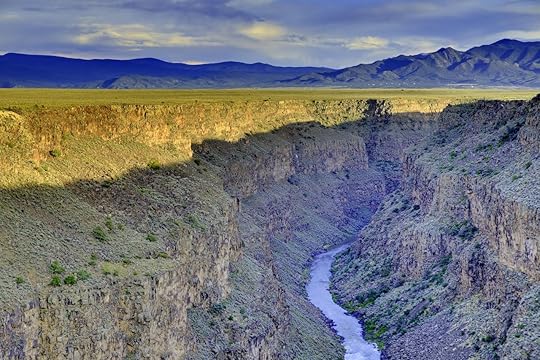
Photo: karengesweinphotography/Shutterstock
While only a fifth of the size of the Grand Canyon, the 50-mile long Rio Grande Gorge is still a sight to behold. The best way to do that is to start at the Wild Rivers Recreation Area and hike down the Wilder Rivers Backcountry Byway. You’ll reach the river and head back up, for a seven-mile loop, shaded in parts by juniper and ponderosa pines and able to peruse helpful signage about the river and history of the gorge.
This area is about 7,500 feet above sea level, and you may get snow in December, so it’s best hiked in late fall and early spring. If you don’t mind a little snow, then consider stopping there on your way to a ski trip in Taos and hiking along the upper rim of the canyon. Often Taos, the base of which is at a whopping 9,200 feet, will have fresh snow while the hikable regions below are simply sprinkled in a snowy dusting that simply makes the area that much more magical.
6. City of Rocks State Park

Photo: Fotoluminate LLC/Shutterstock
When you first lay your eyes on the City of Rocks, you may believe that you are catching sight of yet another impressive, age-old manmade creation. You would be correct, except for the manmade part. Like the ruins at Bandolier or Chaco, the structures to be found in this state park nearly 90 miles east of Las Cruces will command your wonder and attention. Yet these particular designs were created by erosion in the 35 million years since a volcanic eruption filled the area with molten lava. What you see today are towering pinnacles and monoliths reaching as high as four-story buildings. This out-of-the-way park is too hot to visit in summer but is the ideal place for meandering hikes in the cooler months. Just make sure you give yourself plenty of time to explore in December as the sun here sets just past 5 PM in mid-December — and then things get chilly.
7. El Malpais National Monument

Photo: Lucas Townsend/Shutterstock
El Malpais National Monument offers everything from sandstone cliffs and grasslands to forests and sweeping vistas from its higher elevations. A challenging trek is the Zuni-Acoma Trail, which takes you seven miles in one direction over fields of black lava rock and sagebrush along an ancient pathway traveled by the area’s Zuni and Acoma peoples for a thousand years. Depending on where you are, the trail may also be called the Acoma-Zuni Trail.
This trail traverses part of the 3,100-mile-long Continental Divide Scenic Trail that stretches across the Rocky Mountains from the country’s northern and southern borders. It’s a lovely walking route that sees few hikers, but it’s easy to get lost and there’s no cell coverage here. Only consider it if you are an expert hiker and remember to always inform someone of your plans before you depart. 
More like thisCampingThe best places to go camping in the desert in the US
The post The best cold-weather hiking in New Mexico appeared first on Matador Network.

Salemi, Sicily, homes for $1
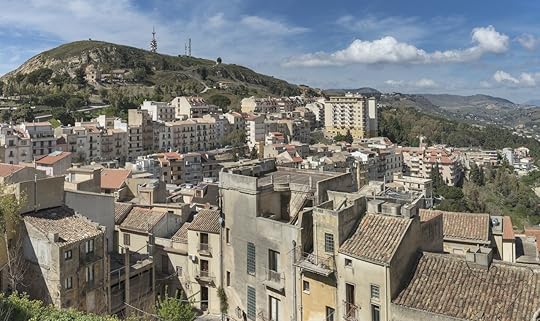
Selling abandoned homes for crazy low prices is quickly becoming an Italian institution. Now, the town of Salemi in Sicily is the latest to experiment with this trend, auctioning off abandoned, dilapidated properties for just one euro (about $1.18). Following an earthquake in 1968, at least 4,000 residents left town, and the population of Salemi never quite recovered (around 11,000 people live there today). Domenico Venuti, the town’s mayor, hopes the initiative will help revitalize the town and contribute to population growth.
Venuti told CNN, “All buildings belong to the city council, which speeds up the sale and reduces red tape. Before launching the scheme we first had to recover the old parts of Salemi where the houses are located, upgrading infrastructures and services from roads to electric grids and sewage pipes. Now the town is ready for the next step.”
The homes for sale date back to the 1600s, lie in the city’s historic center surrounded by ancient walls, and are built with sandstone extracted from the nearby caves. Most require significant repairs, though some are in relatively good shape. Selected houses will go up for auction at a starting price of one euro and be sold to the highest bidder. Potential buyers don’t have to be physically present in Salemi to make an offer but must send a detailed restyle plan to show they’re committed to renovating the property. One buyer can purchase multiple homes, but all buyers must pay a deposit of $3,545, which will be returned if the renovation is complete within three years.
Photographs of the houses will be available on the city council’s website once the project goes live. 
More like thisCyclingA biking guide to Sicily’s natural and historic treasures
The post This Sicilian town is the latest in Italy to auction homes for €1 appeared first on Matador Network.

The history of Mormon funeral potato

Funeral potatoes: The name alone conjures gloomy scenes of mourners. The cheesy potato casserole is likely the invention of a women-run philanthropic organization within the Church of Latter Day Saints called the Relief Society. In order to ease the burdens of grieving families, Relief Society members whipped up the dish to serve at post-funeral luncheons, which is how it earned its unflattering moniker.
Easy to make and serve for a big group, the dish quickly became a staple at gatherings within the Mormon church — LDS Daily writes that “funeral potatoes are definitely inseparable from Mormon culture. While the origins of funeral potatoes might be somber, the dish is now associated with family, comfort, and Thanksgiving dinner.”
A basic funeral potatoes recipe includes cheese, creamy soup, onions, potatoes, and a crunchy chip or corn flake topping. The key to funeral potatoes is of course the carbs, which come in the form of hash browns — frozen is perfectly acceptable, though the more dedicated home cook will likely shred fresh potatoes. Ham, jalapeños, and bacon can all be added to funeral potatoes for an additional layer of flavor.
In a 2017 Food & Wine story, Jenn Rice (who was introduced to the dish by her husband, a native of Salt Lake City) writes that funeral potatoes are, “one of the most oddly satisfying creations that exists in America—nay, the world,” and names them “one of the greatest American triumphs.” But she also admits that few people outside the “Intermountain West,” have had the opportunity to try them. Perhaps that theory is evidenced by a scandalized 2018 New York Post article calling funeral potatoes “oddly named,” “disturbing,” and “mysterious.”
Such claims will sound outrageous to people from the Western United States. Funeral potatoes are no longer confined to Mormon funeral luncheons, and now grace dinner tables from Idaho to Colorado all the way down to Arizona. It’s worth noting that you’ll find funeral potatoes as far south as Texas, where the dish might go by the name “potato casserole.” The blogger who goes by the name Homesick Texan remembers eating potato casserole at her grandmother’s funeral, writing, “While it will be impossible to fill the void left by Grandma Ashner, for a moment at least, funeral food such as this potato casserole rose to the occasion and did its part.”

Photo: Brent Hofacker/Shutterstock
Still, the dish remains so ubiquitous in Utah that the Utah State Fair sometimes holds a cooking competition specifically for funeral potatoes. When the Winter Olympics were held in Salt Lake City, the state issued a series of collectible pins depicting “Mormon soul food,” including one in the shape of a dish of funeral potatoes.
On Twitter, those users familiar with the dish cracked jokes about how deeply rooted funeral potatoes are in Mormon culture: On July 23, one user wrote, “Don’t forget to set out some funeral potatoes for brigham young tonight!,” a reference to Pioneer Day, celebrated on July 24, as the day the supposed Mormon prophet arrived in the Salt Lake Valley. Another quipped, “I’m going to take this opportunity to remind my fellow Saints that…GREEN BEANS DON’T BELONG IN FUNERAL POTATOES.”
Teasing aside, for many home cooks in this mountainous Western region, you can’t do Turkey Day without funeral potatoes. So why is this dish so well-suited to the epic Thanksgiving dinner spread? You might look to the rest of the region’s cuisine for your answer: Funeral potatoes come from a long tradition of casseroles that rely heavily on convenience foods, those inexpensive boxed or canned ingredients with a long shelf life, making them a favorite among big families.
The commitment to convenience is so strong that a brand called Augason Farms sells funeral potatoes in a pouch — all the dried ingredients (potatoes included) can be poured into a baking dish with water and then baked in the oven for an even faster way to prepare. The product is sold out — perhaps another testament to Americans’ obsession with funeral potatoes. 
More like thisDessertFrog eye salad: a classic Western Thanksgiving dish explained
The post Funeral potatoes, a classic Mormon Thanksgiving dish, explained appeared first on Matador Network.

Flight to resume from Boston to HI

Hawaii’s longest nonstop domestic route is resuming just in time for Christmas. The 10-hour flight between Honolulu’s Daniel K. Inouye International Airport (HNL) and Boston Logan International Airport (BOS) is slated to resume on December 18. The Hawaiian Airlines flight used to run five times per week, but when it returns in December it will run two times a week. If all goes well, the number of weekly flights will eventually be increased to six.
When the Boston service first launched in 2019, Hawaii Governor David Ige told KITV, “We typically get more than 60,000 visitors from the greater Boston area. So, it makes it even easier for those visitors to get to the islands.”
Hawaiian Airlines is also planning to resume nonstop service from 13 other major US cities in December, including New York, Los Angeles, San Diego, San Francisco, Long Beach, and Oakland.
Brent Overbeek, senior vice president of revenue management and network planning at Hawaiian Airlines, said in a statement, “We’re pleased with increased demand for travel to Hawai’i, and we’re excited to once again offer our East Coast guests the convenience of our nonstop flights as we welcome them to the islands with new health and safety measures.”
Given Hawaii’s new COVID-19 protocols, travelers will be able to avoid the 14-day quarantine if they show a negative PCR test taken within 72 hours of departure. 
More like thisTravelSustainable travel guide: Oahu, Hawaii
The post Hawaiian Airlines is resuming its longest domestic route just in time for Christmas appeared first on Matador Network.

How to travel Virginia by RV
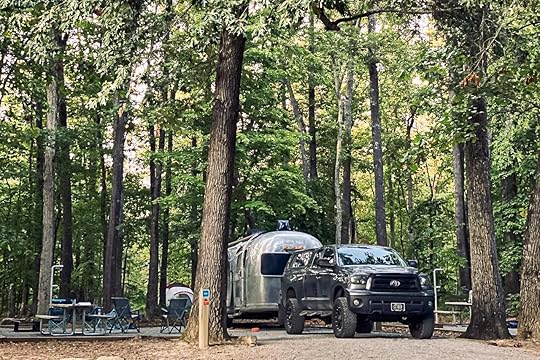
Soaring waterfalls. Million-acre forests. Coastal estuaries, cypress swamps, and rocky gorges. Hundreds of miles of shoreline and thousands of miles of mountain trails. With 3.7 million acres of public lands to explore, Virginia was practically made for RV adventures.
From the mountains to the coast, outlined below you’ll find where to go, what to do, and where to stay — and where to find the state’s famous LOVEworks — when you’re traversing Virginia in the family Airstream. Divvy up the blankets and marshmallows, because it’s high time to make a break for the great outdoors.
Before you go

Photo: Latisha Boone / Virginia Tourism Corporation
If this is your first time RVing — rental, purchase, or otherwise — odds are some situations will pop up that you didn’t expect. Though you should do plenty of your own research, here are a few basic tips on what to know before you go:
Be aware of where your water, electrical, and sewer hookups are (and how they work). They’ll determine where you park the RV in most campgrounds.
Know the amperage requirements of your RV. Too much or too little can damage your appliances. You may want to travel with a converter and extension cord.
“Full hook-ups” means water, electrical, and sewer. “Partial hook-ups” means water and electrical; in this case, you’ll use a dump station to empty your black and gray water tanks.
Bring blocks or stabilizing jacks with you — the ground at your campsite probably won’t be perfectly flat.
Many campgrounds provide escort services for new campers. Just ask your camp host if you have questions or need assistance. RVers are also known to be a tight-knit community — if a neighbor has a similar model, they may be happy to help or provide pointers.
All of the campgrounds in this article are accessible to RVers. Most campgrounds — at least those on public lands — can be booked via reserveamerica.com.
In the mountains

Photo: Virginia Tourism Corporation
With eight different ranges and five peaks over 5,000 feet, the mountains of Virginia are a wild playground of color, especially come autumn. A full quarter of the Appalachian Trail can be found here (the most in any state!), not to mention 21 national park sites and world-class scenic drives — be sure to take your time.
Where to go
There are some 2,200 miles of trails and 45 campgrounds within the 1.6 million-acre George Washington and Jefferson National Forests, which light up any map of Virginia in a blanket of green. Over twice the size of Yosemite (with a fraction of the traffic and crowds), Virginia’s forests are the pinnacle of East Coast outdoors.
For something more geographically specific, state and local parks offer the same epic Virginia wilderness in more manageable packages. Douthat State Park, with 43 miles of hiking and mountain-biking trails and a 50-acre lake, makes for a great weekend dive into the Alleghenies. Breaks Interstate Park, one of only two interstate parks in the nation, is named for the “break” in Pine Mountain, a 1,000-foot gorge created by the Russell Fork of the Big Sandy River. Known as the “Grand Canyon of the South,” it’s one of the largest gorges east of the Mississippi.
If you’re looking to check out Virginia’s most scenic landscapes by water, get out on the Clinch River. You can kayak, canoe, and fish this waterway that flows through some of the Great Appalachian Valley’s most beautiful gorges along its course to the Tennessee River. Fort Blackmore to Hill Station is a particularly scenic eight-mile trip.
Bonus recommendation: Doe Run Farm’s sunflower maze is an excellent pitstop for some memorable photos of the kids.
Where to stay
Beyond the nine RV-accessible camping areas in the national forests (definitely put Sherando Lake on your list), Douthat State Park has four campgrounds that are all equipped for RVs. Nab a reservation early for a site with views of Douthat Lake.
Breaks Interstate Park has 138 campsites, most of which are wooded and fairly secluded. And just off the Blue Ridge Parkway, Explore Park in Roanoke — replete with a treetop aerial course, river access, even a tavern — has plenty of RV sites at Don’s Cab-Inns Campground.
Where to find the LOVE
Breaks Interstate Park has a dedicated-to-adventure LOVEwork painted by Ellen Elmes; there’s also a standout LOVEwork at Humpback Bridge, in the Allegheny Highlands.
Around the Shenandoah Valley

Photo: Shutterstock/chrisukphoto
Where the Blue Ridge and Allegheny Mountains descend into the Piedmont — gently sloping hills that roll toward the Atlantic — lies the Shenandoah Valley, a place as peaceful as the soft sounds of its name suggest. But the “Big Valley” also hides big adventure.
Where to go
One of the best-known spots in Virginia, Shenandoah National Park protects a long and narrow swath of the Blue Ridge Mountains, with the incredibly scenic 105-mile Skyline Drive providing access across the winding ridge. Along with wetlands, forests, and waterfalls to explore, 101 miles of the Appalachian Trail traverses the park, too.
Speaking of waterfalls — any fan of cascades needs to see Crabtree Falls at least once, as it plummets away from mile marker 339.5 of the Blue Ridge Parkway. The 1,200-foot drop over five tiers makes Crabtree the highest vertical-drop waterfall east of the Mississippi.
Cumberland State Forest is much further off the beaten tourist path, despite being just an hour’s drive west of Richmond (via US-60). The sun-dappled woodlands envelop just over 30 miles of trails, four lakes, and plenty of opportunities for birdwatching and wildlife spotting. Keep an eye out for old homesteads that dot the forest as well.
Bonus recommendation: Wandering the orchards, apple picking, stopping for apple cider — a visit to Showalter’s Orchard will quickly feel like a family fall-road-trip tradition.
Where to stay
Big Meadows Campground in Shenandoah National Park is a local favorite (it’s within walking distance of three waterfalls and several popular trails), though note that it has no electric hook-ups. Crabtree Falls Campground, on the Tye River and just off the Blue Ridge Parkway, is a secluded little spot that’s “west of nowhere and south of heaven.” And Shenandoah River State Park — incredibly beautiful in autumn — has RV spots right at the water’s edge.
Where to find the LOVE
Strasburg’s LOVEwork — near Shenandoah River State Park — is made from centuries-old material; the LOVEwork at Massanutten is 11 feet tall and 35 feet wide!
To the coast

Photo: Jeff Taylor / Virginia Tourism Corporation
Where saltwater and freshwater meet, biodiversity blooms. The coastal estuaries just off Virginia’s Atlantic shore teem with life, outdoor adventure, and places to get away.
Where to go
Virginia’s Great Dismal Swamp National Wildlife Refuge is a see-before-you-die kind of place. It’s the largest intact remnant of a once million-acre maze of forested wetlands, marshes, and barely mapped waterways. Ancient bald cypress pop right out of the fog-lined water, some as old as 500 years. A .75-mile boardwalk extends deep into the forest from the Washington Ditch entrance, and a 4.5-mile hiking trail will take you all the way to Lake Drummond.
York River State Park, protecting a delicate environment on the banks of the York River before it feeds into Mobjack Bay, is also worth a stop. Here, Indigenous and colonial artifacts hide in the forests, 30 miles of hiking and bike trails snake along the water, and fresh and saltwater fishing spots keep even expert anglers guessing.
Bonus recommendation: Bay Country Kayaking can get you on just about all of the tidal rivers and navigable creeks in the area — which is saying something, as Gloucester County alone has 506 miles of shoreline.
Where to stay
Right along Virginia’s Rappahannock River, Grey’s Point Camp has water everywhere. The kids will beeline for the waterpark, while the adults might prefer hopping in a paddleboat or taking it easy on the beach. For a unique experience, book a private charter — this is some of Virginia’s best fishing (and one of the state’s best campgrounds).
Westmoreland State Park, set right on the Northern Neck of the Potomac River, has dozens of standard electric sites. The kids can hunt for shark fossils near the water and look for American bald eagles, ospreys, and great blue herons right from the campground.
Where to find the LOVE
Grab a pint and a LOVEwork selfie at Montross Brewery, near Westmoreland State Park; the LOVEwork at Waller Mill Park gives you an excuse for a round of disc golf, more hiking, or kayaking the 360-acre reservoir.
It should be clear by now: You’ll find LOVE — and adventure — in every corner of the Commonwealth. 
The post How to see the best of Virginia in an RV appeared first on Matador Network.

October 23, 2020
Private ski resort rental on VRBO

Staying in a luxurious mountain cabin is an enticing prospect, but getting a private resort to go with it makes this Vrbo deal almost irresistible. You can rent a ski-in, ski-out chalet in Beaver, Utah, for just $100 per night (for a three-night stay), and it comes with your own ski resort.

Photo: Vrbo
Whichever group is lucky enough to land the five-bedroom, 16-person rental will also have exclusive access to Eagle Point Resort on February 16 — yes, that means you’ll be the only ones on the property.

Photo: Vrbo
Melanie Fish, VRBO’s travel expert, said in a statement, “Demand for Vrbo properties in mountain destinations within driving distance from home is higher this year, and homes are quickly booking up. To inspire families to start planning their ski vacations, we created a one-time-only listing that combines everything people love about a winter getaway in a Vrbo: privacy, breathtaking natural beauty, access to the outdoors, room to spread out, and an opportunity to make some epic memories together.”

Photo: Vrbo
According to Shane Gadbaw, owner of the Eagle Point Resort, this spot “is considered a perfect getaway from the crowded slopes, and now we are offering this unique experience consisting of some next-level social distancing. We never have lift lines and certainly won’t this day.”
The home will be available for booking starting October 30 at 1 PM EST, for a three-night stay from February 15 through February 18, 2021, for just $100 per night. 
More like thisWhere to StayNot a camper? These cabin escapes offer a luxurious alternative
The post Stay in this luxury ski cabin with private access to an entire mountain resort for just $100 per night appeared first on Matador Network.

Disney+ racism disclaimer

Disney has often taken flack for portraying some racist stereotypes in its movies, and now its Disney+ streaming service will display a warning before certain films start, warning viewers of those stereotypes. The message will appear before many of Disney’s older films, including “Peter Pan,” “Dumbo,” “The Jungle Book,” “The Aristocats,” Aladdin,” “Lady and the Tramp,” and “Swiss Family Robinson,” warning viewers of “negative depictions and/or mistreatment of people or culture.”
Disney took this even further with a post on its website singling out specific characters and explaining their racist implications. “Peter Pan,” for example, shows Native Americans speaking in an “unintelligible language and repeatedly refers to them” by a derogatory term, and “Dumbo” includes a racially insensitive depiction of crows performing minstrel shows.
“These stereotypes were wrong then and are wrong now,” the message reads, “Rather than remove this content, we want to acknowledge its harmful impact, learn from it, and spark conversation to create a more inclusive future together.”
The decision to introduce the disclaimer came after a consultation with a group of independent experts, who review how media portrays underrepresented groups and advocate for more thoughtful solutions. A similar decision was recently made by HBO Max for the classic, yet problematic, film Gone With the Wind.
In a video posted to Disney’s website, Geena Davis, the group’s gender-equality advocate, asked, “What message are we sending to little kids at the most vulnerable age, if characters are one-dimensional, stereotyped, sidelined, hypersexualized, or simply, not there at all? We can’t change the past, but we can acknowledge it, learn from it and move forward together to create a tomorrow that today can only dream of.”
The Disney+ disclaimers went live on Friday. 
More like thisMoviesWhy does ‘yellow filter’ keep popping up in American movies?
The post DIsney+ added a disclaimer before some classic movies for racist stereotypes appeared first on Matador Network.

Food and drinks offered to the dead

Death is a universal experience, but how people acknowledge it is different around the world. Some mourn the passing of life while others celebrate their loved ones’ new journeys. In many cases, food is an important aspect of these rituals and traditions — whether it’s enjoyed by the living or offered to the dead.
This is how different cultures honor the dead with food and drinks.
1. Mexico

Photo: Mille HL/Shutterstock
From October 31 to November 2, families in Mexico celebrate Dia de los Muertos, or Day of the Dead. The celebration honors those that have passed with ofrendas during what is traditionally believed to be the time of year when the veil between the living world and the spirit world is at its thinnest. Dia de los Muertos dates can be traced back to Aztec traditions that are thousands of years old and have since blended with Catholic influences over time. Among the tributes left on altars for family members is a number of different food and drinks.
Calaveras de azúcar, or sugar skulls, are some of the most famous, and represent both sweetness and nostalgia (though it’s important to note the shaped and painted sugar skull is not typically eaten). The deceased ancestor’s favorite food is typically offered up as well as is pan de muertos (bread of the dead), which is a semi-sweet bread shaped like bones and dusted with sugar, according to NPR. Pumpkin or amaranth seeds are also common and were used to make skulls before Europeans brought sugarcane to the region. Finally, there’s alcohol. Pulque, a lightly alcoholic drink made from fermented agave sap, was the drink of choice in the pre-Columbian era, though tequila, mezcal, whiskey or any other beverage is left today.
2. India

Photo: Indian Food Images/Shutterstock
Hindus in India and elsewhere celebrate Pitru Paksha, a 15-day period when food offerings are given to pay homage to ancestors. It dates back to the story of Karna, a demi-god in the story of Mahābhārata who questioned why people offered jewelry and flowers to the dead but no food.
People celebrate in different ways, the Times of India notes, but one important aspect is to avoid any meat or fish products, onions, garlic, and junk food. Offerings of rice, black sesame seeds, barley flour balls, and water are left for those that have passed. Other foods include basundi (condensed milk), kheer (a rice and milk dessert), lapsi (wheat grain porridge), rice, dal, and a vegetable curry. Traditionally, the food offerings are first given to cows, dogs, and birds, which deliver it to the pitrs (ancestor spirits).
3. Japan

Photo: sakura r/Shutterstock
One of Japan’s largest festivals is the three-day Obon, also called Bon, festival, which takes place August 13-15 (though some parts of Japan celebrate in July). Obon dates back 500 years. One origin theory is that a Buddha disciple saw the spirit of his mother, who was in the Realm of Hungry Ghosts, and the Buddha said food offerings help the spirits.
Today, food remains an important part of the celebration. Japanese Buddhists leave seasonal fruits and vegetables on their butsudan (the Buddhist family altar) along with flowers. Cucumbers are carved into horses and eggplants into cows to serve as spirit animals to help guide ancestors back from the other side.
Obon is one of the three largest celebrations in Japan after New Year and Golden Week, and celebrations aren’t limited to the home. Food like takoyaki (octopus balls), yakitori (barbecue chicken skewers), and dango (sweet dumplings) also take center stage during parades and events.
4. China

Photo: tuaindeed/Shutterstock
In China, Qingming Festival, which typically falls on April 4 or 5, has been celebrated for more than 2,500 years. It’s celebrated by Han Chinese as well as many of the country’s ethnic minorities, and it’s a designated day to demonstrate respect for ancestors. Sweeping an ancestor’s tomb is the central observance (the day is also called Tomb Sweeping Day in English), but food offerings and fire crackers are also common.
Traditionally, the day before the Qingming Festival was Chinese Cold Food Day. As the name suggests, only cold foods are eaten, and the practice spans each day of the Qingming Festival. Foods that are eaten and presented as offerings are cooked beforehand, like sweet green rice balls (made with rice flour and bean paste), sazi (Qingming cakes of fried flour, egg, sesame, and onion), peach blossom porridge, and Qingming snails.
5. Ireland and other Celtic regions

Photo: AJSTUDIO PHOTOGRAPHY/Shutterstock
About 2,000 years ago in what is now Ireland and northern England, the Celtic people practiced Samhain around October 31 to November 1. It was believed to be the time when the border between the living world and spiritual world dissolved, and it marked the time to celebrate ancestors, harvest, and the changing of the seasons. It was originally celebrated for three days and three nights, and Druid priests would light community fires with a wheel and make animal sacrifices. Costumes were commonplace, and feasts were held where people would heartily drink beer and mead. In the United States, many Halloween traditions can be traced back to Samhain.
In the Medieval Ages, people added a dumb supper to the celebration. Families set the table for themselves and their ancestors, and ate a seasonal meal in complete silence (“dumb” in this case refers to not speaking). After dinner, doors and windows stayed open so the dead could come and go as they pleased to eat cakes left out on the table. 
More like thisReligionFrom modern mummies to fantasy coffins, 9 death rituals from around the world
The post The world honors the dead with food and drinks. Here’s what they give. appeared first on Matador Network.

What is a Pe’a Samoan tattoo

Tattoos have become so ubiquitous that we don’t bat an eye at people with fingers adorned with black ink, full sleeves, or even neck tattoos. It’s significantly rarer, however, to see someone whose entire lower half is covered in ink. Ironically, this much less common sight is among the oldest and most traditional forms of tattooing in the world. The Pe’a is the name of the traditional Samoan male tattoo, covering the whole body from the waist to the knees, and its origins are rooted in Samoan mythology. This Samoan “tatau” is more than just an aesthetic complement to the body — it signifies courage and serves as a symbol of manhood, a rite of passage both beautiful and painful.
The Pe’a isn’t just a quick trip to the tattoo parlor. It’s an extensive process that includes flying to a Samoan community, enlisting the aid of an experienced tufuga (tattoo master), and enduring up to two weeks of “tapping.” Braden Ta’ala, a US citizen currently living in Utah, experienced the daunting yet rewarding process first-hand.

On the right, Braden Ta’ala and his 90-year-old grandpa, both bearing the Pe’a. Photo: Braden Ta’ala/Instagram
Although Ta’ala has lived his whole life in the US, he had always been curious about his Samoan ancestry — especially his grandfather’s Samoan tatau. No men in his family — after his grandfather — had got their Pe’a, and after much research about the tatau’s history and cultural significance, Ta’ala decided to follow in his grandfather’s footsteps and fly to New Zealand for his Pe’a.
Finding a tufuga
The Pe’a is more than a simple tattoo — it’s a journey that begins long before the needle touches the flesh. According to Ta’ala, “the whole process leading up to the actual tapping took around a year of preparation and planning.”
A huge part of this is finding the right tufuga. “There are only two family lines from which the traditional tufugas originated that have passed down the practice to their children, etc,” says Ta’ala. “It was important that I used one of these family lines, just as my grandfather did.”
He continues, “I worked primarily with one of my uncles in New Zealand and used his connections and ties to tufugas in Samoa. We originally planned to fly a Tufuga and his assistants/stretchers from Samoa to New Zealand, but long story short, there were issues, and the day we arrived in New Zealand we had to make other arrangements. By some miracle, we found a renowned tufuga who lived in Auckland on a two-week break between tataus who agreed to do it. And he was amazing. So much experience; his work is gorgeous.”

Photo: Braden Ta’ala/Facebook
Finding the right tufuga is also extremely important because he chooses what the tatau actually looks like. “It is all in the tufunga’s mind and completely up to him,” said Ta’ala. No matter what design the tufuga chooses, however, it always “has specific areas with meaning related to the Samoan culture and significance for how you should live your life.”
Getting the tattoo
Ta’ala started preparing for his Pe’a several months before getting the tattoo itself, including mental preparation and studying for what to expect. As part of the “payment” for the tatau, Ta’ala’s family was expected to not only fly the tufuga and his assistants to New Zealand but also provide them with meals, drinks, and snacks. In Samoan culture, the family (or “village”) of the man receiving the Pe’a serves as the support system for both the man and the tufuga. Ta’ala’s family in New Zealand took two weeks off work to host him and the tufuga and provide for all their needs.

Photo: Braden Ta’ala/Facebook
“The actual tattoo took 10 days from start to finish,” said Ta’ala. “The shortest day was six hours, and the longer days were around 10 hours. There are two people that just stretch the skin to the correct tension, shave, and wipe the blood. They had to do multiple cold showers and massage the tatau with soap to prevent infection. Traditionally in Samoa they’d use the ocean for this part but in New Zealand we did cold showers. In the old days many would die from infection when getting their Pe’a.”
Although tattoos are typically associated with pain, the Pe’a is on a whole different level. The “tapping” method consists of the tufuga using serrated bone combs attached to tortoiseshell fragments with a mallet to drive the combs into the skin. The process is slow, meticulous, and painful. This is where Ta’ala’s mental preparation came in handy.
“The first day went well,” he said, “the adrenaline from years of planning and a solid year of focused mental preparation was paying off. The second morning, I woke with a 103-degree fever, cold sweats, throwing up and my body shaking. I had made a critical mistake — not eating enough for my body to endure the physical trauma.”
This reaction is common during the Pe’a when men fail to eat enough. Ta’ala recovered from this episode after an hour and was “back laying down listening to the recurring, and almost therapeutic, taps of the sausau (tapping mallet) striking the au (comb of needles).”
Ta’ala endured a significant amount of pain over the course of 10 days, but “focusing on the importance and why I was doing this was critical” to getting through it, he said.
It’s more than just a tattoo
The Pe’a is a trial by fire. Those who pass through the flames endure hardship both mentally and physically, but it’s the pain that makes the Pe’a such a meaningful experience.
“These markings are not just a tattoo,” said Ta’ala, “but a reminder of who I am and how I should conduct myself with service and humility to my family and community. These visible marks on my body remind me of the unseen marks of mental preparation, endurance, and control needed to complete the tatau. The internal marks have resulted in a strength that I wouldn’t have received without the extreme level of pain, endurance, and dedication that was required.”
According to Ta’ala, the tatau has recast his approach to life’s challenges and reshaped his conception of his ancestral past.
“It gave me a much-needed understanding of what it means to be a Samoan.” 
More like thisCultureHow Native Arctic women are taking back the art of Inuit tattoos
The post The beauty and pain of the Pe’a, the traditional Samoan tattoo appeared first on Matador Network.

GM announces all-electric Hummer

This is The Climate Win, the most positive sustainability news around the world every week.
General Motors is stepping up its commitment to an electric future in a big way, quite literally. GMC’s Hummer, the formerly gas-guzzling, engine-revving favorite of hardcore off-roaders and insecure middle-aged men is back after an absence of more than a decade. The only things missing are the loud engine and exhaust plumes.
The headline announcement of GM’s multi-billion-dollar transition to an electric future is an all-electric Hummer with a 350-mile range. Powered by three electric motors, the so-called “supertruck” features 1,000 horsepower adjustable air suspension. GM will manufacture the new Hummer at its Factory Zero facility in Detroit.
The most unique aspect of the vehicle draws inspiration far from the nation’s highways. “Crab Mode” will allow the Hummer to drive in a diagonal manner on rough terrain, effectively crawling its way over rough surfaces and around obstacles too large for its massive suspension. Though the truck’s “Extract Mode,” which raises the suspension by six inches, can also be activated when it’s time to cross a stream or navigate a boulder field.
The Hummer will charge at up to 100 miles in ten minutes. But it isn’t cheap and won’t be available until fall 2022. The first model, dubbed the EV3X, starts at $99,995. The slightly cheaper EV2X — priced at $89,995 — will be released a year later.
GM’s commitment to ditching the gas-powered engine is impressive, with 20 separate EVs promised by 2023 from its brands that include GMC and Cadillac. Ford has made the same commitment, and with startups like Rivian promising electric-powered off-road capabilities of a similar caliber, the future looks bright for gas-free outdoor access.
More climate wins this week
Intrepid Travel became the world’s first tour operator with sustainability initiatives verified by the Science Based Targets initiative. The company, carbon neutral since 2010, will adopt stricter emissions standards on its trips by replacing carbon-intensive vehicles with cleaner transportation options on many tours. It will also transition to 100 percent renewable energy by 2025. “Intrepid’s verified science-based targets mark the most significant step we’ve taken on our climate journey in the past 15 years,” said James Thornton, CEO of Intrepid Travel, in a press release.
A Swedish shipbuilder designed a massive cargo carrier vessel that is powered by wind. Set to sail in 2024, the 650-foot-long ship is designed to carry cars across the ocean while emitting 90 percent fewer emissions than a traditional diesel engine cargo ship. Hopefully, this model paves the way for cleaner cargo transport on a global scale.
Denver voters will decide on a Climate Tax that would take funds generated by a slight sales tax increase and apply it directly toward renewable energy, greening its transportation infrastructure, and other sustainability initiatives. The Colorado Sun reported that if the ballot measure passes on November 3, it could serve as a model for other large cities across the country. 
More like thisSustainabilityThe BLM is here to serve our public lands, not just big business
The post The Hummer is coming back in 2022. This time, it’s all-electric. appeared first on Matador Network.

Matador Network's Blog
- Matador Network's profile
- 6 followers



